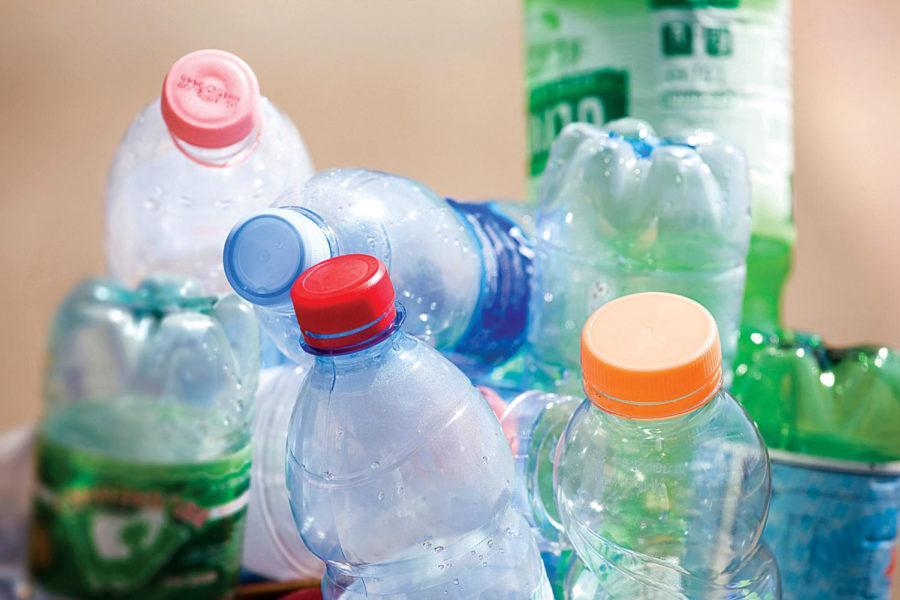Ellingson: Accumulation of plastic debris hurts environment
Debris and waste from plastic products, such as the plastic bottles shown here, have been collecting on our planet since plastic production began in the 1950s. Plastic does not decompose quickly, and plastic debris currently poses a threat to environmental health and habitats.
March 31, 2013
Debris has been creating a coating of filth on the surface of our planet at an increasing rate in the last few decades, and a large percentage of that is due to the accumulation and fragmentation of plastics. The oceans have especially been hit hard by the damage, and more and more plastic has been found underwater over time because humans as a whole are very dependent on plastic products.
Since the 1950s, when the majority of the production of plastic products began at a large scale, the entire planet has started to become covered by the debris that it created. While statistically only 10 percent of waste comes from plastics, it makes up a significantly larger proportion of the overall debris worldwide.
There are four main categories of debris: micro-debris (less than five millimeters in diameter), meso-debris (five to 20 millimeters), macro-debris (20 to 100 millimeters) and mega-debris (greater than 100 millimeters). They might seem small, but they can be harmful to many species of organisms in the world.
Plastic does not decompose very quickly and can remain in the environment for hundreds to thousands of years (possibly longer in certain areas, such as in seas or oceans). Research is still being done on exactly how long it takes, though, since plastics have really only been around for approximately 60 years.
Larger pieces of plastic can degrade into micro-plastics, which can be especially dangerous for marine ecosystems and aquatic creatures since it can deplete oxygen levels in the water. It can threaten and endanger wildlife by being a choking and entanglement hazard, cause starvation, distribute non-native organisms to various environments and transport persistent organic pollutants, chemicals and algae.
Because of all the damage that plastics have caused, especially to our oceans, good management today can make a significant difference in the direction this problem is heading. In the past, people have been careless about discarding waste, especially plastic because it is a lightweight material that is often seen as disposable and easy to replace.
Path dependence is essentially the effects of historical legacies (past events that have large effects on subsequent dynamics of social-ecological systems) on the future trajectory of a system. One example of this would be how the Great Depression economically affected households several decades later because no one wanted to repeat those events. In this case, the path dependence of plastic production would be how people have witnessed the impacts of plastic debris in the oceans and marine wildlife and how they are now trying to take steps to reduce the amount of future debris and even clean the environment. Humans reached a peak in plastic production in the 1980s and 1990s, but after people started to take notice of the negative environmental impacts it was creating, production decreased quite a bit.
Unfortunately, the damage has been done and even continues to worsen as the number of plastic fragments found in oceans increases every day because of our past actions, and it could take a long time to change for the better.
But a change has to start somewhere. If people started limiting their demand for plastic and used alternative materials (and also produced less waste in general), we could start a process that over time could decrease the amount of debris in the environment for future generations.
If people simply decreased their demand and dependence on plastic materials, we could some day have a much cleaner environment. These days, people all over the world are becoming more concerned with the environmental impacts of their decisions and are taking a “go green” initiative towards waste, though it is still not where it needs to be quite yet.
Next time you go shopping, think about the products you buy and the materials they are made of. If the option is available, buy more environmentally friendly products instead. For example, if you have a habit of buy disposable bottles of water, try buying a bottle that you can wash and reuse. Because in the end, what you throw away won’t just disappear after you’re done with them.
Caitlin Ellingson is a senior in journalism and mass communication and environmental studies from Milo, Iowa.







